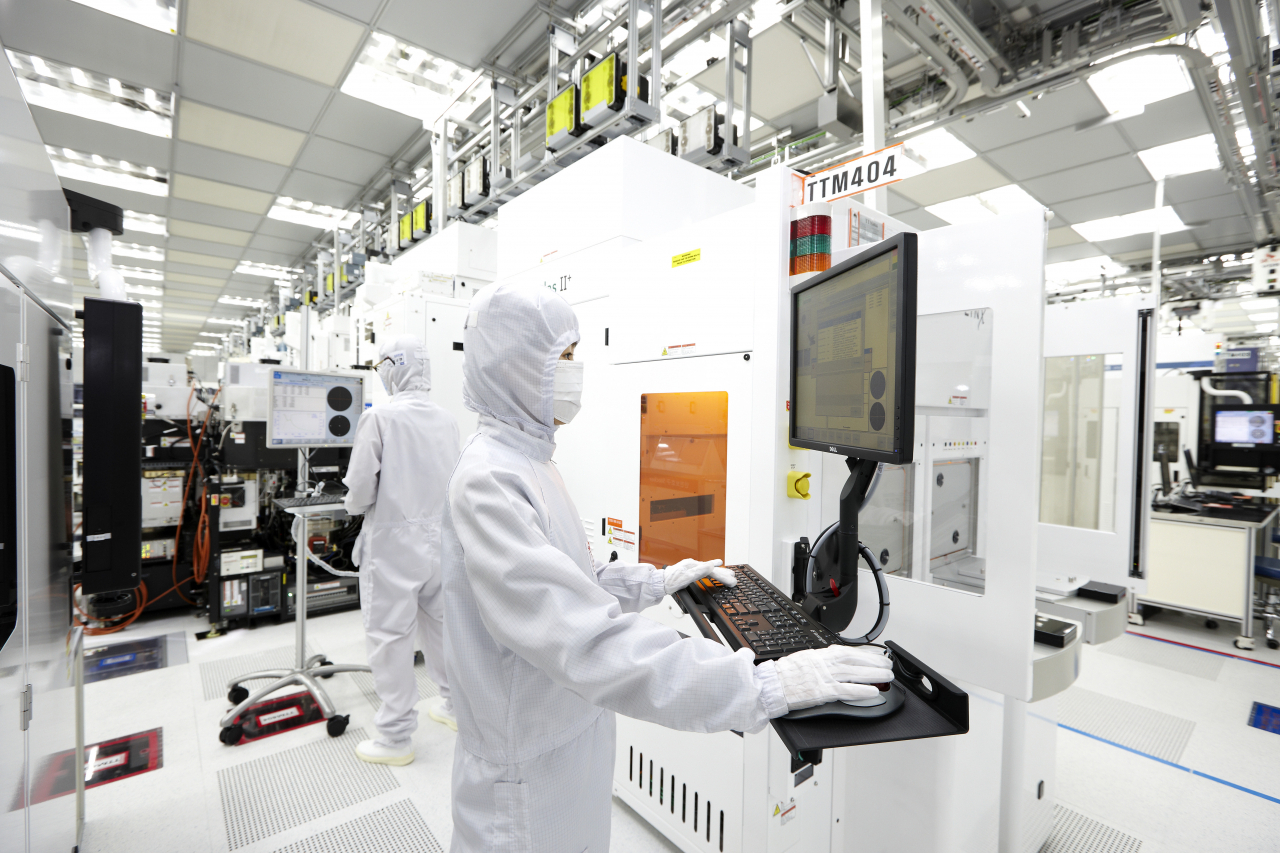Korea forecast to overtake Taiwan in chip production by 2032: report
Korea, home to Samsung, SK, expected to take up 19% of global production, becoming No. 2 after China
By Jie Ye-eunPublished : May 9, 2024 - 15:25

South Korea is projected to account for nearly 20 percent of global semiconductor production in 2032, reaching an all-time high in output, a US report showed on Thursday.
Asia’s fourth-largest economy is predicted to take up 19 percent of global chip production eight years later, according to a report by the Semiconductor Industry Association, in partnership with the Boston Consulting Group.
The report evaluated that Korea invested in the development of the semiconductor industry from the early stage, helping the two domestic chip makers -- Samsung Electronics and SK hynix -- grow into global semiconductor powerhouses.
They each occupy more than half of the global NAND flash memory and DRAM markets, the report said.
It would represent an increase of two percentage points from the 17 percent tallied in 2022 and mark a record high to place second in the world after China, which is forecast to account for 21 percent in 2032.
Korea is also expected to overtake Taiwan, which currently holds second place. In the meanwhile, Taiwan and the US are expected to take up 17 percent and 14 percent, respectively, in the same year, the report showed.
As of 2022, Korea shared third place with Japan in global chip production, after China and Taiwan, who currently account for 24 percent and 18 percent, respectively.
The report forecast that Korea is expected to reach 19 percent with a significant increase in its production capacity through the construction of semiconductor factories.
The report divided chip production regions into seven regions: Korea, the US, Europe, Japan, Taiwan, Mainland China and others.
It is interpreted that Korea’s product share is increasing as production capacity has increased significantly compared to other regions through the construction of semiconductor factories.
The report estimated Korea‘s semiconductor production capacity growth rate between 2022 and 2032 to reach 12 percent, while the world average is expected to be 108 percent.
The predicted figure is the second highest after the US (203 percent), ahead of Europe (124 percent), Taiwan (97 percent), Japan (86 percent), Mainland China (86 percent) and other regions (62 percent).
Compared to 2012, Korea‘s semiconductor capacity growth rate in 2022 (90 percent) was second only to China’s record which stood at 365 percent.
The production capacity growth rate in other regions was highest in that order, including Taiwan (67 percent), Europe (63 percent), and Japan (36 percent) during the same cited period. The United States was the lowest at 11 percent, while the rate excluding these regions came to 72 percent.
However, Korea‘s share of chip production below 10 nanometers including cutting-edge processes, is expected to fall significantly from 31 percent in 2022 to 9 percent in 2032. Taiwan’s rating was also expected to decline from 69 percent to 47 percent over the cited period.
On the contrary, the US will grow its share of advanced logic manufacturing to 28 percent of global capacity by 2032, up from 0 percent in 2022. America is projected to capture 28 percent of total global capital expenditures from 2024 to 2032, ranking second to Taiwan (31 percent).
This is due to a significant increase in investment, such as building factories for cutting-edge processes, as the US government encouraged investment in facilities there through the CHIPS Act.
The US CHIPS Act provides $52.7 billion, including $39 billion in subsidies for semiconductor production and $11 billion in research and development to boost domestic semiconductor output.
The report projects around $2.3 trillion in capital spending in 2024-2032, compared to $720 billion in the decade before the enactment of the CHIPS Act in 2013-2022. But in the absence of the CHIPS Act, the US would have captured only 9 percent of global capital spending by 2032, the report said.
The European Union unveiled the European CHIPS Act, China initiated the third phase of its Integrated Circuit Industry Investment Fund, and various other incentive programs have emerged around the world, including Korea, Taiwan, Japan and India.


![[KH Explains] Why Korea's so tough on short selling](http://res.heraldm.com/phpwas/restmb_idxmake.php?idx=644&simg=/content/image/2024/05/19/20240519050115_0.jpg&u=20240520081646)
![[News Focus] Mystery deepens after hundreds of cat deaths in S. Korea](http://res.heraldm.com/phpwas/restmb_idxmake.php?idx=644&simg=/content/image/2024/05/17/20240517050800_0.jpg&u=)















![[Today’s K-pop] Seventeen to launch new subunit duo](http://res.heraldm.com/phpwas/restmb_idxmake.php?idx=642&simg=/content/image/2024/05/20/20240520050685_0.jpg&u=)